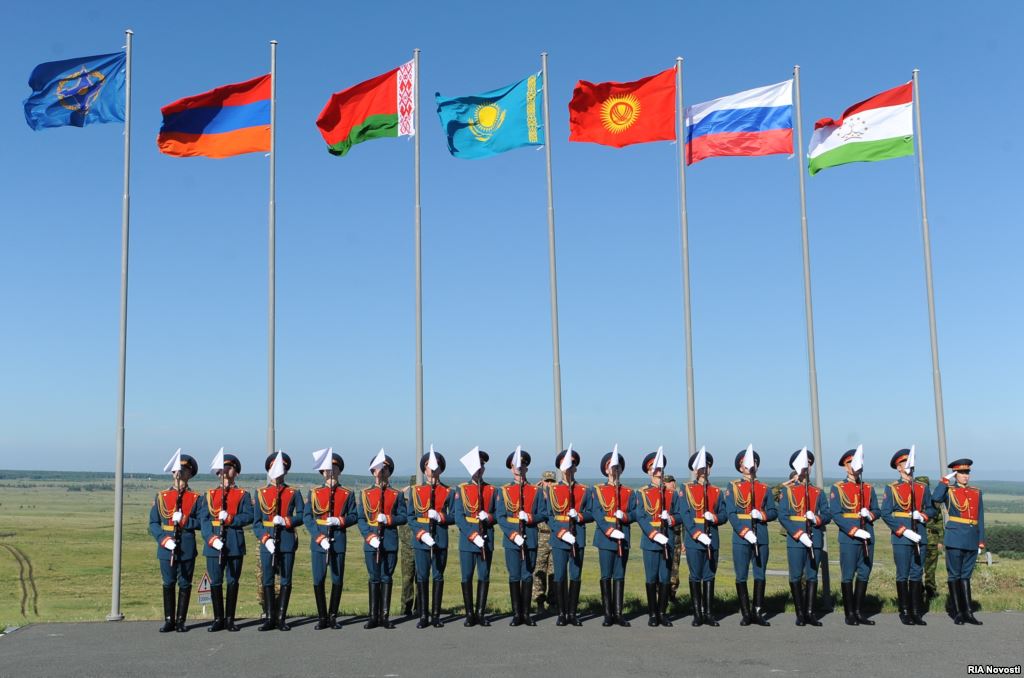CSTO attempts to acquire international personality are doomed to failure
 The situation has not changed
The situation has not changed

During the upcoming CSTO Council meeting, Foreign Ministers will consider opportunities for CSTO participation in the UN peacekeeping operations. The CSTO is a conventional post-Soviet organisation with inherent non-binding nature of agreements, priority of national interests over interests of allies, and the desire to have everything without giving anything in return. CSTO aspirations to become a member in the global club of influential intergovernmental associations are futile.
The CSTO history has its roots in 1992, when the Collective Security Treaty was signed in Tashkent. Belarus acceded to the agreement on December 31st, 1993. A total of nine post-Soviet states signed the Treaty. In 2002, six states founded an international organisation based on the Treaty.
The organisation has evolved due to Russia’s desire to maintain its status as a regional power with own sphere of geopolitical influence. Belarus’ interests in the CSTO are mercantile per se: she receives all sorts of preferences from Russia for participation in the block. In addition, CSTO Member States seek to protect their political systems from real and imaginary threats. CSTO is not a value-based organisation. The latter has largely predetermined its weakness.
Back in 2009, the CSTO announced the intention to re-equip the Collective Rapid Reaction Force (CRRF) with modern weapons, mostly Russian-made, by 2015. However, these plans have stumbled on finances: the Programme was estimated at USD 1 billion. Russia was ready to sell arms at a discount, while other CSTO member states were interested in receiving Russian arms free of charge. As a result, even the CSTO peacekeeper uniform was made with the Russian money. It is stored in warehouses until joint military exercises take place.
The situation with ensuring external security of the CSTO Member States is even worse. In recent years, Armenia repeatedly informed the allies about aggressive actions of Azerbaijan, including an attempt to violate the Armenian border. However, Yerevan received no support, neither political, nor moral. Exacerbation at the Armenian-Azerbaijani border in April this year pushed Armenia to the limit. It accused the “allies”, especially Minsk, of betrayal.
Armenia is not alone in its disappointment. On December 23rd, 2014, in Moscow, at the CSTO Summit, President of Tajikistan Emomali Rahmon said his country counted on implementation of the decision ‘On assistance to the Republic of Tajikistan to strengthen the Tajik-Afghan border’, adopted on September 23rd, 2013. Tajikistan serves as a buffer for the entire post-Soviet space from the threats of terrorism, arms and drug smuggling, and is entitled to effective assistance from its CSTO partners. On February 4th, 2015, Tajikistani Foreign Minister Sirodjiddin Aslov expressed dissatisfaction with the inactivity of partners in the Organization.
In December 2015, Russia felt the “reliable shoulder” of its allies, too. Moscow was not supported by the CSTO partners (except Armenia) to conduct a military campaign in Syria and for its position on the destruction of Russian SU-24 bomber on November 24th, 2015 by Turkish Air Force.
In the recent past, Russia twice attempted to rally the CSTO. For instance, in November 2012, Moscow initiated the reformatting of the CSTO. Under the pretext of optimisation, it offered to transfer some functions from the national level to the Russian military leadership, for example, to abolish the Air Force of Kyrgyzstan and Tajikistan. The armed forces of the CSTO Member States were supposed to develop according to a single plan, designed in Moscow. If implemented, the Kremlin’s initiative would have transformed the armies of the member states to de facto branches of the Russian Army. After the beginning of the confrontation with the West, Russia made unsuccessful attempts to engage the CSTO states in the conflict, which would have changed the format from “Russia-West” to “CSTO-West”. In both cases, the Kremlin could not offer its formal allies any additional preferences for the new risks. And it had not sufficient leverage to achieve its goal. Currently, Moscow is in the state of strategic loneliness in the post-Soviet space.
Attempts to establish cooperation between NATO and the CSTO were a complete failure. Since 2004, the CSTO repeatedly sent official proposals to the Alliance for various forms of cooperation, and received no response to any of them. The Alliance prefers direct communication with the CSTO member states.
In addition, the CSTO is disregarded by Beijing, which prefers communication through the Shanghai Cooperation Organisation and on a bilateral basis.
The CSTO budget amounts to several million US Dollars a year. The CSTO leadership has no opportunities to carry out independent policies: it is entirely dependent on the decisions of the participating countries. Therefore, it has no political personality and will not have it in the future.
Currently, solely the political will and financial capabilities of the Kremlin determine the CSTO viability. There are no grounds to regard the CSTO as a reliable tool to ensure the security of the participating states.
Consensus by the Member States’ heads is required to use the CSTO forces. In addition, in order to use the CSTO forces outside its members, a UN Security Council mandate is required, which would be practically impossible to obtain for political reasons. The CSTO member states prioritise direct international contacts, rather than indirect through the ex-Soviet integration structure. The lack of recognition by the West limits the CSTO international legal personality and makes it nearly impossible to receive the UN Security Council mandate. That said, the CSTO plans to participate in the peacekeeping operations appear unattainable.
Image: RIA Novosti
Subscribe to our newsletter




Situation in Belarus
Constitutional referendum: main consequences


 Video
Video
How to count the political prisoners: are the new criteria needed?


 Video
Video
Paternalism In Decline, Belarusian Euroscepticism, And The Influence Of Russia


 Video
Video












